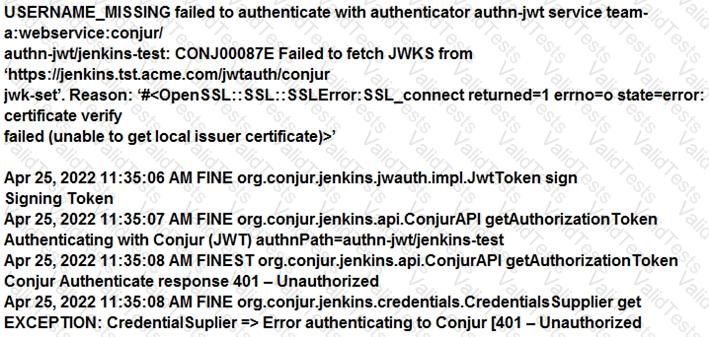When using the Seed Fetcher to deploy Kubernetes Followers, an error occurs in the Seed Fetcher container. You check the logs and discover that although the Seed Fetcher was able to authenticate, it shows a 500 error in the log and does not successfully retrieve a seed file. What is the cause?
While troubleshooting an issue with accounts not syncing to Conjur, you see this in the log file:

What could be the issue?
When attempting to retrieve a credential managed by the Synchronizer, you receive this error:

What is the cause of the issue?
When loading policy, you receive a 422 Response from Conjur with a message.
What could cause this issue?
While installing the first CP in an environment, errors that occurred when the environment was created are displayed; however, the installation procedure continued and finished successfully.
What should you do?
What is a possible Conjur node role change?
A customer wants to ensure applications can retrieve secrets from Conjur in three different data centers if the Conjur Leader becomes unavailable. Conjur Followers are already deployed in each of these data centers.
How should you architect the solution to support this requirement?
You are diagnosing this log entry:
From Conjur logs:

Given these errors, which problem is causing the breakdown?
While retrieving a secret through REST, the secret retrieval fails to find a matching secret. You know the secret onboarding process was completed, the secret is in the expected safe with the expected object name, and the CCP is able to provide secrets to other applications.
What is the most likely cause for this issue?
You are setting up the Secrets Provider for Kubernetes to support rotation with Push-to-File mode.
Which deployment option should be used?